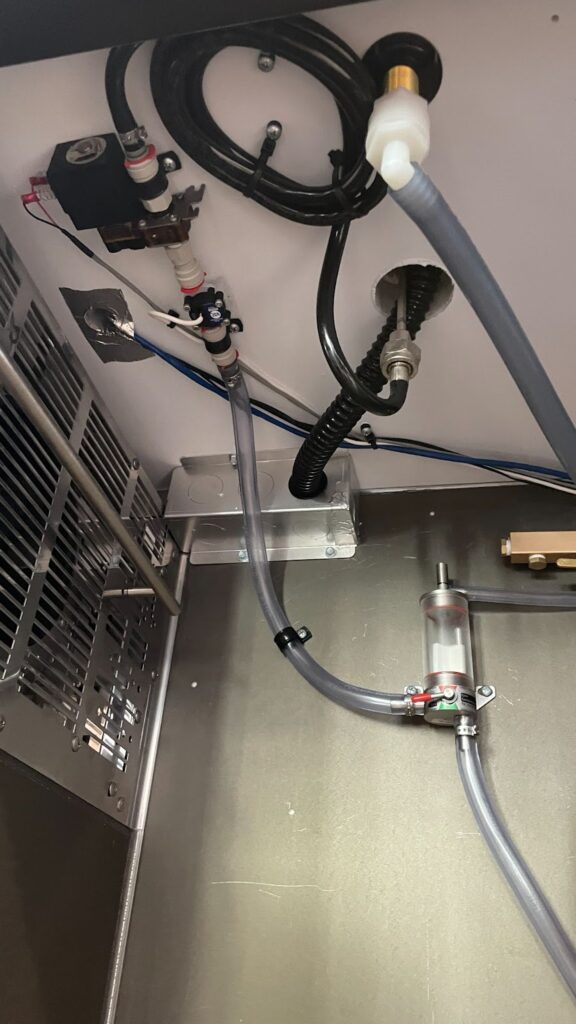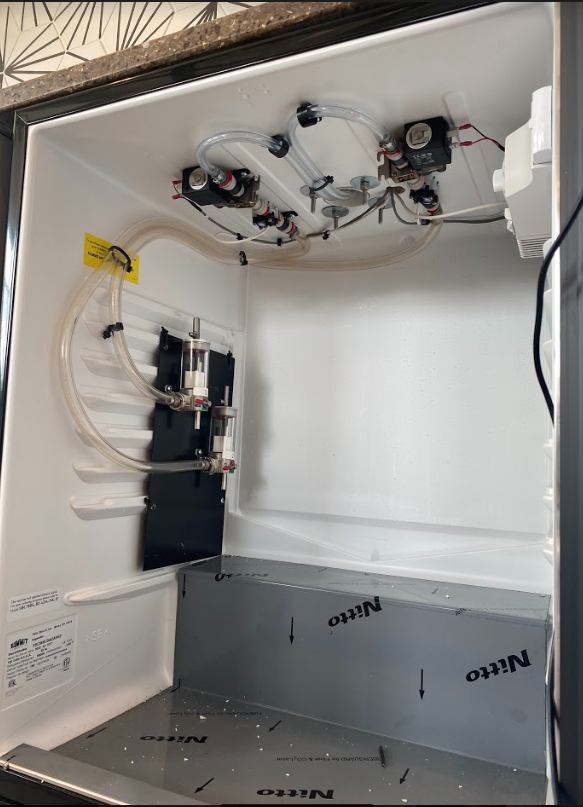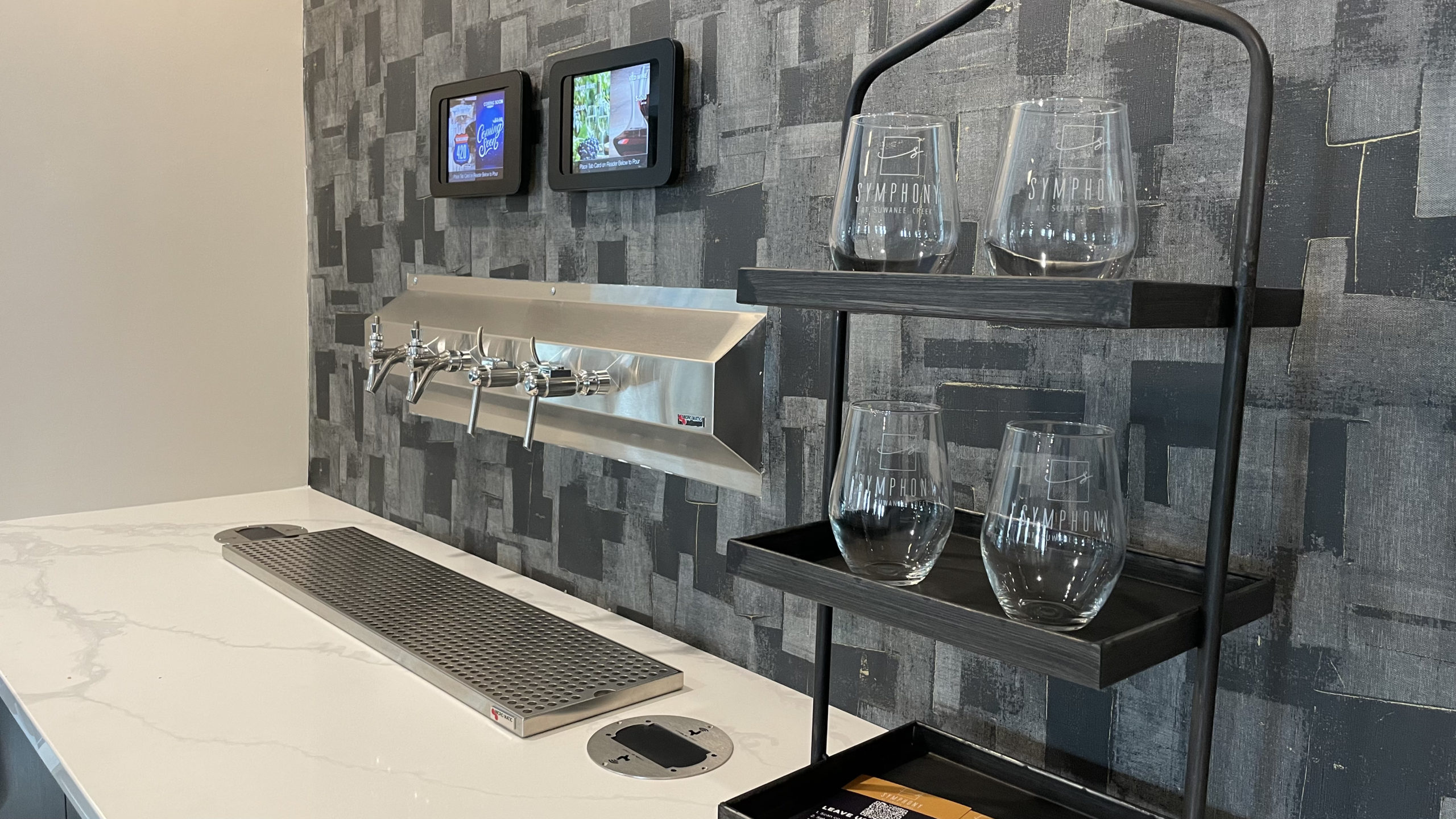Self-Pour Systems : Your #1 Match Made in Heaven
Self-pour systems come in all shapes and sizes. Table Tap takes pride in offering each of its customers a unique solution that is based on the type of venue they are operating and how they want to use self-pour. Valentine’s Day has recently come and gone, love is still in the air at Table Tap. In this blog, we’ll be playing Cupid to help match multifamily communities with the self-pour system of their dreams.
Our self-pour systems have caught fire as an amenity in multifamily communities across the country.
Apartment complexes employ our systems to accelerate lease up, differentiate their property, retain residents, enhance the resident experience, control cost of goods sold, and limit liability. Typically, apartments are looking for 2-6 taps. Space is very limited at most properties, so stand alone direct-draw units are usually the easiest to implement and leave the smallest footprint.
Where to locate the system?
Taps should be located in areas that are easily accessible for residents. Build it and they will come. Taps are typically placed where properties desire to encourage social interaction. This could be a clubhouse, rooftop sky deck, room beside the pool, resident lounge, etc. It’s a widespread misperception that self-pour amenities can only be used in high-rise or mid-rise buildings in urban regions where there is constant foot traffic. It’s no secret that foot traffic through clubhouses in garden-style communities is less prominent, but our system will incentivize residents to frequent common areas more often.
What types of units to offer?
The different beverages we see on tap at apartments are beer, seltzer, wine, cold brew coffee, and kombucha. The mix of beverages being offered determines what type of stand-alone unit will be needed. Different beverages need to be served and stored at specific temperatures: Beer at 35 degrees, cold brew coffee at 40 degrees, white wine at 45 degrees, and red wine at 55 degrees.
If only one type of beverage is being offered (e.g., beer), then a unit with one temperature zone will do the trick. If two types of beverages are being offered (e.g., beer and wine), then a unit with two temperature zones is needed. If three or four types of beverages are being offered (e.g., beer, wine, cold brew) then two separate units may be needed.
Cabinet integrated vs stand alone?
We source direct draw Perlick refrigerators since they are the best caliber ADA compliant kegerators available for our installations. They are fantastic at keeping beer cool from the keg to the tap and from the tap to the glass. For self-pour, keeping beer very cold is key. Beer becomes foamy as it warms up even a little bit. Residents don’t want to squander the majority of their daily allotment of ounces—which is limited—on foam.
When beer leaves the keg, it travels up into the tap tower on top of the unit. Beer sits inside this tower in between pours. Perlick direct draw refrigerators have a blower hose that continuously blows cold air up into this tower keeping beer ice cold. There are undercounter kegerators on the market that can serve beer. However, these kegerators do not have a blower hose. Without a blower hose, the beer sitting in the tap tower gets warm. The next glass you pour will be brimming with froth if you wait just a short while between pours as the beer heats up in the tower.
We always recommend direct draw refrigerators that force cold air up into the tower via a blower hose for any system that is serving beer in order to ensure the system operates effectively. We advise against utilizing any type of undercounter beer unit. The very last thing we want is for a property to invest a great deal on a system that won’t produce quality beer. Wine and cold brew coffee don’t foam since they’re pushed with Nitrogen gas rather than CO2. An undercounter unit may be sufficient if a venue merely wants to serve wine or cold brew.


Fixed wall system?
We can install fixed wall systems in an apartment complex, just like the large beer walls we install at taprooms and restaurants. As was previously mentioned, space availability can occasionally be a problem. Nonetheless, the property can enjoy a sleek-looking system as seen in the photos below provided the system is specified early enough in the build to strategically locate the beer system remote behind the wall.

Kegs, unfortunately, cannot be stored in the cloud. They must be kept in a refrigerator located somewhere in the building. This means we’ll need at least a 5’x5″ room for storing a refrigerator, glycol machine, and other equipment.
As beer travels from the refrigerator to the taps, the glycol machine circulates a coolant alongside the beer lines, keeping them cold. The refrigerator storage room directly adjacent to the tap wall is the simplest way to install a wall system. The further away the refrigerator is from the tap wall, the more difficult the installation becomes.
Alcoholic or Non-Alcoholic?
The types of beverages available in an apartment are entirely determined by the demographics of the building and the preferences of its tenants. Beer and wine are available in many of our units. In 99 percent of these apartments, alcohol is provided as a complimentary amenity. Most municipalities do not require a license for a business to provide free alcoholic beverages. If the establishment intended to charge customers by the ounce of alcohol they poured, it would need an alcohol license.
All of our customers are strongly advised to conduct their own due diligence and research the local regulations of the municipality in which they operate. A 4-tap setup allows the property to offer a fairly diverse beer and wine product mix. One tap each for a popular domestic beer (such as Bud Light, Miller Lite, or Michelob Ultra), one tap each for a regional craft brew, one tap each for red and white wine.
Aside from beer and wine, cold brew coffee and kombucha are gaining popularity across the country, particularly among millennials. Because these are non-alcoholic beverages, they can be provided as a free amenity with daily limits or residents can be charged for what they pour. Table Tap has recently developed a non-alcoholic beverage Pay at the Tap solution. This solution eliminates the need for an RFID card. A credit card processor can replace our traditional RFID reader at the taps. Simply choose a pour size (full cup or half cup), insert and pay with a credit card, and then tap a button on the screen to pour.
There is a self-pour system for you whether you live in a garden-style apartment in Idaho, a mid-rise near Coastal Carolina, or a high-rise in New York. Don’t be the apartment complex that doesn’t offer residents beverages on tap. Sign leases, retain residents, and drink up with Table Tap!












